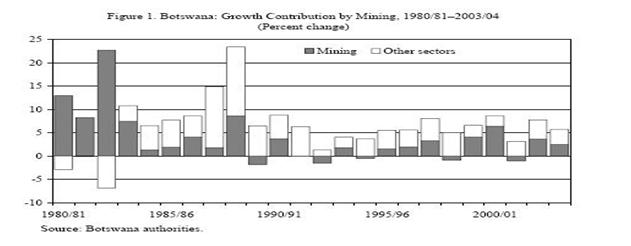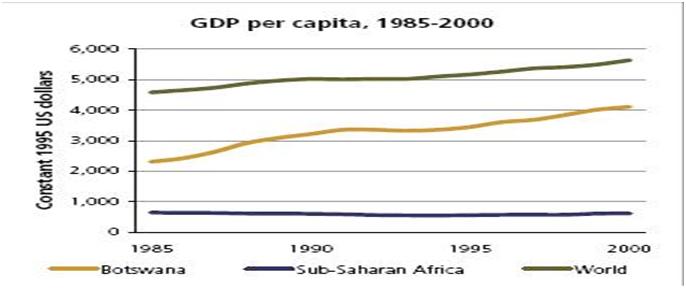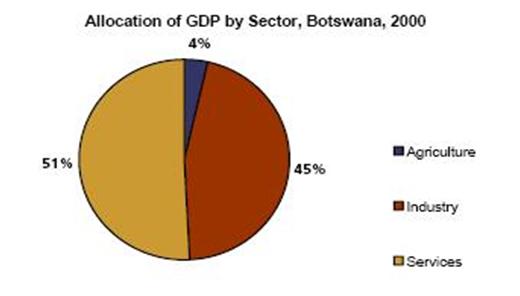Trade Growth and Poverty In the developing world
By D.A.Parker
Introduction
When considering Trade in today’s economically integrated world, it is important to consider the terms of trade (TOT) as a primary concern. The TOT defines the nature of trade and controls the direction of benefit. This paper will examine and evaluate the conditions of trade, imposed upon the developing world and assess the usefulness and effectiveness, of global TOT, towards poverty reduction and growth.
The Global market an unequal opportunity
Countries that have integrated in to the Global economy have experienced rapid growth over a sustained period and have considerably reduced poverty along the way. It would appear obvious, that if these countries should be able to adapt to the global market that there would be no reason why another country could not do the same. Unfortunately, however, many undeveloped nations do not have the technological know-how, infrastructure or political and economical policies to warrant competing in the first place. Along with these conditions many LDC face fiscal inadequacies, burden of debt, trading restriction and structural adjustment policies (SAP) enforced by donor countries and financial institutions, that restrict the growth and development of low income countries, e.g. the World Bank and the IMF. According to Schuurman (1993) the problem of introducing the developing World into a ‘World System’ is that “underdevelopment occurs in countries that are subject to trading in an unfair, unequal, ‘world-market’, where high trading tariffs and restrictions are imposed”.
TOT (Terms of Trade)
Diminishing returns and unequal exchange, clearly the developing world is in deep trouble. On One-hand the Neo-Ricardian economist struggle with exchange and barter value, in an ever changing commodity market, with fluctuating prices and import deficits, concomitant with Neo-liberal growth centered capitalist, pushing for trade liberalisation and a free market to exploit.
Free Trade ISI and SAP
Considering the juxtaposition presented by the Brant and Berg reports, which came out of Bretton Woods; it became obvious that a compromise in principle was needed when considering ‘Third World Development’ (TWD). The problem is that post war modernisation economist and capitalist governments’ rejected any kind of state intervention as this conflicts with free market ideology and was considered socialist.
Introduced by Singer (1950) the IMF offered the solution, in the form of “Import substitution, industrialisation” (ISI) (Begg & Fischer et al, 1991:639); ISI could be considered the fore runner – or ancestor – of structural adjustment policies (SAP), What ISI meant, was that the capitalist governments could manipulate and control the industrial development process of the TW countries, in order to suit their own economies.
Consequently subsidisation of favoured industries, led to heavy investment in some sectors, whilst, stunting growth or closing, other sectors of the economy; whilst maintaining control over export and import, tariff’s and taxis (see 1991). The ‘Developing World’ entered an era of dependent industrialisation, only obtaining economic favour from the west as long as they kept to capitalist ideologies and vagary.
TW industrialisation, along with the change from food to cash cropping in agriculture, has increased reliance on importation of food and other basic essentials exponentially. The industrialisation process also means that they have become increasingly reliant on energy importation for fuel and power (Beaud M, 2000: 290-301). “The increasing reliance of the TW on the west can be clearly observed, through study of the modernisation process” (Kiely R 2003).
Results of unequal Trade
A recent World Bank report (2007) on trade in Africa clearly shows the failing of liberalisation and trade policy in the African continent. The report states that, “Over the past three decades Africa has become ever more marginalized from trade at the global level” (ibid). “Africa’s share of world exports has dropped by nearly 60 percent, a staggering loss of $70 billion annually, equivalent to 21 percent of the region’s GDP and more than five times the $13 billion in annual aid flows to Africa” (ibid).
Solutions or Problems
Dependency theorists such as Frank and Prebisch would suggest nationalisation to hold back the flood of multinationals and encourage local business and industries. To support this nationalisation they suggest high import tariffs and control of exports along with tight foreign exchange policy; remarkably similar to ISI imposed by the IMF after Bretton Woods.
Reinforcing the opinion that state intervention is beneficial for struggling LDC economies, is a study undertaken by Steve Dowrick and Dr Jane Golley (2004) entitled, Trade Openness who Benefits? In order to assess the validity of a report by Sachs and Warner, on the benefits of free trade, it interestingly uncovers that, “free trade has no effect on developed economies, negligible if no effect on less-developed economies, and a negative affect on undeveloped economies” (2004). This seemingly backs up the argument for dependency theorists such as Frank and Prebisch who say suggest that free trade is bad for TW development. The other side to this argument is the opinion that growth of industrial development has brought nothing but “hostility, suffering and dehumanisation too many along with rapid urbanisation and poverty. The unequal division of wealth created by nationalist doctrines in order to protect and enhance the nation states power and independence [can only create more poverty]” (Kitching, 1982) .
The right conditions
Having the right conditions for trade to be effective towards poverty reduction is clearly the key, but then the questions must be asked, what are the right conditions and can they be created? Ghatak (2003) argues that, “if free trade does not allow a countries true comparative advantage situation to develop, owing to the difference between marginal social and marginal private cost, then trade should be temporarily protected during its initial high cost period” (2003;193), or until, “specialisation is established” in the international economy. This is the same route that many of the successful Asian Tigers have used to gain comparative advantage in the world market. Ghatak (2003) goes on to express that in order “to increase social welfare the infant industries must grow up to be able to compete on equal terms with foreign producers in domestic and world markets” (2003;193). This concept should be applied both locally and nationally and across the entire African continent and other LDC, for trade to be of any benefit towards long term poverty reduction on a global scale.
Free Trade & Liberalisation
The conditions for effective trade are according to Ha-Joon Chang trade policies that are “based on neoclassical trade theory: Free trade promotes the optimal allocation of resources” according to Chang “except when a country has a monopoly in trade” (Chang, 2004: 292). These assumptions Chang argues are, “based on stringent assumptions”, including “identical technologies across countries a ‘well behaved’ production function, full information, no learning cost and no risk” (ibid), these assumption are clearly false when considering present day conditions in the developing world; the problem of trading on these terms has got to severally hinder growth and poverty reduction throughout the developing world.
Does trade reduce poverty?
In 2005 the UNDP reported that 1 billion people in the ‘Third World’ are living on less than $1 a day, today’s conditions are not much different. The millennium goals for development and poverty reduction proposed by the World Bank and IMF appear to be helping somewhat, though clearly, there is still along way to go, (see fig 1).

“The global politics of trade” – therefore TOT- according to Preston (2005) are “conducted wholly within the framework of the WTO” (2005:196). Consequently the policy that these organization pursue are heavily influenced by TNC and multinational corporations.
David dollar and Aart Kraay (2001) of the World Bank in their report on Trade Growth and poverty, report that, “A key issue today is the effect of globalization on inequality and poverty” they go further to state that “evidence from individual cases and from cross-country analysis supports the view that globalization leads to faster growth and poverty reduction in poor countries” (2001). This contradicts findings made by Oxfam expressed in their paper entitled Rigid Rules Double Standards (2002) in which they clearly show that free trade liberalisation without tariffs and controls severely hinder growth of poor countries whilst subsidisation and tariffs have shown to be beneficial to underdeveloped economies (Oxam,2002: chp 3). The report goes on to show that globalisation and free trade has in some cases increased poverty despite apparent Growth (2002.chp 9), undermining that there is no apparent link between growth and poverty reduction.
Conclusion
It is seemingly clear and well understood that trade is good for growth. However, evidence would suggest that this does not necessarily mean that poverty reduction will automatically follow. The problem of poverty reduction is more complicated than just jumping into a global market. The Asian Tigers such As china and North Korea, have shown that it takes time, careful planning, and control to be successful in the global market. Trade done properly and fairly under the right conditions can be beneficial to poverty reduction. On the other hand if the rules are unfair or not followed trading in the global economy can only bring further poverty and growth reduction.
Bibliography
Dorwick S & Golley J (2004) Trade openness and Growth: Who Benefits, available at http://oxrep.oxfordjournals.org/cgi/reprint, also available on the Athens web, accessed on 10/04/2007.
Dollar D Kraay, (2002) Trade Growth and Poverty, available at,
http://rru.worldbank.org/Documents/PapersLinks/442.pdf, accessed on 12/04/2007.
Ghatak, S, (1995) Introduction to Development Economics, Industrialisation, Protection and Trade Policies.
Ha-Joon Chang (2001) Rethinking Development Economics, Wimbedom publishing company, London.
Kiely R, (2003) Sociology and Development, The Impasse and beyond, Routledge, 11 New Fetter Lane London EC4P 4 EE.
Kitching G. N, (1982) Development and underdevelopment in historical perspective populism, nationalism, and industrialization. London, New York, Methuen.
Oxfam (2002 ) Rigid Rules Double Standards, available at http://www.maketradefair.com/en/index.php?file=26032002105549.htm,acessed on 10/04/2007.
Payne, A. (2005) The Global Politics of Unequal Development,
Schuurman F J (2004) Beyond the impasse, zed Books Ltd London.
World Bank (2007) Trade, available at
http://web.worldbank.org/WBSITE/EXTERNAL/COUNTRIES/AFRICAEXT/EXTAFRREGTOPTRADE/0,,menuPK:502475~pagePK:34004175~piPK:34004435~theSitePK:502469,00.html
World Bank (2002). http://rru. org/Documents/PapersLinks/442.pdf
http://siteresources.worldbank.org/INTGDF2002/Resources/FullText-Volume1.pdf



